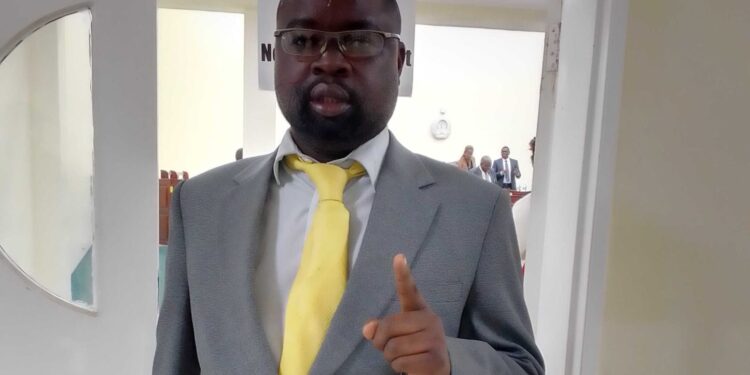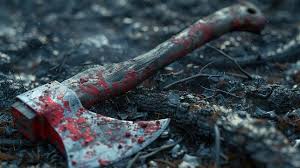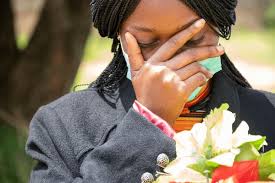FACED with a debilitating crisis resulting in residents fetching water from unprotected sources, Chinhoyi stakeholders recently convened an indaba to brainstorm on permanent solutions to fix the challenge. The conference held at Chinhoyi Pastoral Centre under the banner “Congregating To Find A Lasting Solution To The Water Woes”, drew the participation of infrastructure investors, government officials and residents associations, among others.
Convener of the event, Citizens’ Coalition for Change (CCC) Chinhoyi Member of Parliament (MP) Engineer Leslie Mhangwa said he was not usurping powers of the municipality by convening the conference, but merely playing a coordinative and oversight role at the service delivery agency, whose office bearers must not sit on their laurels amid crippling water shortages.
“I am only a conduit. We are charting a new trajectory where we see seamless coordination of offices, where you see all leaders in one room scratching our heads finding a solution to our woes.
“… collectively we will propose solutions to our municipality and take ownership of the problem and make sure we collectively resolve the problem. This platform will inevitably create a new culture in Chinhoyi where we work together to make our town great again,” said Mhangwa.
The MP lamented that water problems countrywide were giving rise to medieval diseases such as cholera and dysentery.
“The reason why we are here is partly due to legacy issues. Our town was allowed to grow without matching infrastructure. The little infrastructure has seen little if any, maintenance. This can be interpreted differently depending on which side of the fence one stands on, but the bottom line is we sit in such a predicament.
“Justifiably so, some may opt for private initiatives to get alternative sources of water by sinking boreholes, there are many reasons why we should not make it the order of the day
“Sustainability of having every household have its water source, the frequency of drilling sink holes as well as the risk of contamination brought by the proximity of sewer lines and possible boreholes is a huge challenge.
“With the above, it is incumbent upon us, as sons and daughters of Chinhoyi, to come up with a sustainable plan to provide adequate, reliable and safe water for residents for a 30-year horizon.”
Thus far, the lawmaker added, Chinhoyi residents and ratepayers had not proactively positioned themselves to transform the town into a technology hub leveraging on the Chinhoyi University of Technology (CUT).
“Long-term planning and studious work ethic will get Chinhoyi out of the water crisis,” said Mhangwa, who is also chairman of the Parliamentary Portfolio Committee on Energy.
Chinhoyi Municipality engineering services director, Engineer Simon Marara told the gathering council was failing to meet water demand as it currently produces 17 cubic litres, which falls short of the required 60 cubic litres.
It was heard that the council was also recording water losses due to vandalism which negatively affects the equitable distribution of water resulting in some areas, particularly on high ground, going for months without the precious liquid.
By-laws to punish vandals, who tamper with water valves, are set to be implemented soon. Edias Dziva, an engineering consultant from Brain Colgouhn Hugh O’Donnell (BCHOD), presented findings of a water augmentation study conducted in Chinhoyi, which showed that the town has access to clean water with minimal contamination through Biri Dam.
However, the outdated and broken submersible pumps at the old pumping plant installed in the 1980s, which have exceeded its expected lifespan, and overuse of the new plant pumps, are causing bottlenecks. BCHOD recommended short to long-term solutions, including the rehabilitation and upgrading of existing plants, the construction of new pumping plants, and the rehabilitation of the reticulation system.
Fixing the old submersible pumps would cost US$859 000, while upgrade and expansion would require US$3 million. The rehabilitation of the old treatment plant would cost US$608 000, with an additional US$3.4 million for expansion. The new plant would need US$785 000 for rehabilitation and US$2.9 million for expansion.
The consulting firm also recommended expanding the storage tanks to hold 90 cubic litres of water and rehabilitating the reticulation system with new valves and piping systems. Chinhoyi Residents and Ratepayers Association representative and businessman, Richard Chafausipo appealed to the council to allocate funds for the expansion of the new pumping station.
Engineer Marara explained that in 2014, the council sought a partner to address the water challenges and received 26 bidders. However, only three bidders remained after the disclosure process, and they failed to secure funding due to inadequate tariffs which does not make any business sense.
The council’s finance director, Zephaniah Chirarwe told participants that two-thirds of the proposed 2024 council budget was reserved for the water reticulation rehabilitation which should come from devolution funds. The remaining balance would be covered through a special levy, as intergovernmental transfers alone are insufficient to procure raw water pumps, valves, and other necessary fittings in the short term.
Chinhoyi Mayor Councilor Owen Charuza expressed gratitude to MP Mhangwa for hosting the event and acknowledged the efforts of the council management. He expressed optimism to overcome the water crisis, stating that his team was prepared to adopt the consultant’s recommendations outlined in the report.
It was resolved that Chinhoyi Municipality would pursue water augmentation plans with its parent ministry and engage the central government to get funding. Council currently collects an average of 50% of revenue against a ballooning ZWL$22 billion debt owed by consumers. Consequently, the council struggles to allocate money towards fixing water reticulation infrastructure.
Source NewZimbabwe












